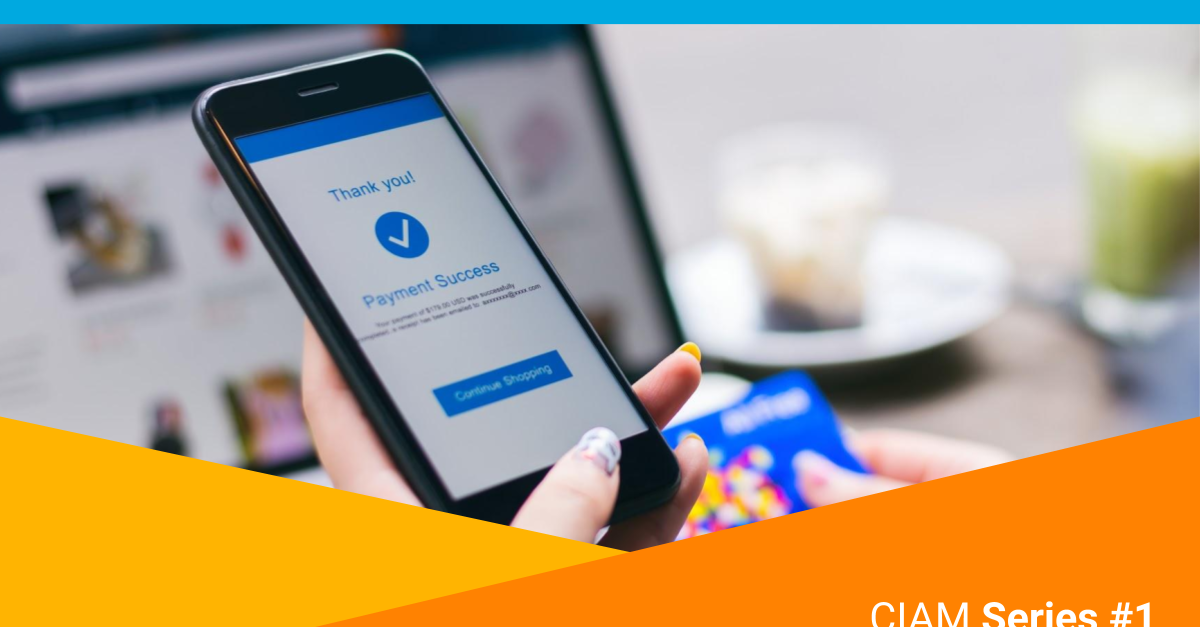
From watchwords shouted at the city gates to the first computer password (created in 1961 for the MIT Compatible Time-Sharing System), security has played a vital part in society. The importance and complexity of online security has grown right along with the Internet, requiring businesses to juggle the security of user data with the need to ensure a great user experience – a need filled by Customer Identity and Access Management (CIAM).
What is CIAM?
A subset of Access Management (AM), CIAM provides companies with secure login solutions on a broader scale, supporting hundreds of millions of customers. CIAM solutions integrate authentication and authorization for B2C or B2B use cases across multiple platforms. They can also help improve customer registration and login experiences, while reducing the risk of security breaches. Another benefit of CIAM solutions is that they offer branded and customized experiences for B2C and B2B customers.
Your company’s signup experience might be a customer’s first impression — you want it to be a great one! A good CIAM solution can help you retain customers by making the process streamlined and easy. Keep authentication simple with single sign-on (SSO) and ensure users have the same great experience across multiple platforms with unified customer identities. With a good CIAM solution you can easily balance the desires of your customers for a seamless, secure experience and the needs of your business for a simple-to-manage solution.
How are CIAM solutions requirements evolving?
Where a single username and password was once the norm, today’s businesses are opting for solutions that include multi-factor authentication (MFA). Options like adaptive authentication can ensure that the user experience is seamless, while ensuring user data remains secure. Adaptive authentication uses a risk score to determine whether to grant a user access or if a second level of authentication is required. This risk score is based on multiple criteria, for example, a user’s location, time of login, and device being used. If a user logs in from the same device and location daily, the risk score is low — but if someone logs in half the world away, adaptive authentication recognizes it as unusual and will demand a second level of verification. Keeping authentication steps to a minimum helps provide a frictionless user experience, while maintaining your users’ data safety. MFA will only be required when it is necessary.
As CIAM evolves, it can be tough to balance customers’ desire for fast and simple access with the need to maintain security, but single sign-on (SSO) can reduce the friction and improve user experience. Utilizing a user’s existing credentials like Google or Facebook is another way to streamline the process, and some companies are moving toward passwordless login and using a customer’s device to provide authentication.
Understanding why you should buy vs. build a CIAM solution for your organization
Building an in-house Customer Identity and Access Management (CIAM) solution might seem like a tempting choice, exchanging the initial investment cost of a third-party solution for hard internal development work. However, for the same reason you’d hire an electrician to rewire your house, a third-party CIAM solution is usually the best option. Instead of devoting the valuable time of your developers to building, iterating, and maintaining an internal authentication system, outsourcing your CIAM solution allows you to focus on strategic initiatives, while the experts keep your CIAM solution reliable, compliant with data privacy regulations, and scalable to meet the demands of your growing business.
Choosing a third-party solution doesn’t just save effort — it can save a lot of time, meaning your product gets to the market much faster. Choosing a CIAM provider that offers plenty of customization and support lets you design the ideal customer experience without requiring your developers to have the specialized knowledge and resources that effective, reliable, and scalable identity management requires.
What matters when it comes to picking a CIAM solutions provider?
-
Ease of Use for Developers and Customers
A great CIAM solution will be simple for both developers and end users, offering MFA and support for a wide range of platforms, while giving you precise control over your access management policies. Options like social authentication (such as using Google to sign in) offer security without forcing users to remember yet another password, while easy-to-use developer controls allow for fine-tuning and customized branding. Like payment processing systems or communication software, CIAM providers are another tool in the developer’s kit, and like any tool, you want the one that fits you. Look for a solution with solid documentation and a clear, easy-to-use administrative UI that offers plenty of options without bogging you down in the details.
-
Security first
Information security has been a challenge since long before computers, and today the cost of a data breach is high. When a customer service breach can compromise the security of millions of users, it’s important to have a CIAM solution you can trust to keep your users’ data secure without making sign-in a chore. A CIAM provider with adaptive authentication means your users will only be asked for MFA when it’s necessary, while ensuring that their – and your—information stays protected.
Applications often hold some of the most desirable pieces of information for hackers — personal and financial data, like banking information or social security numbers. A CIAM solution that keeps up with the complex and ever-evolving requirements of security is vital for the safety of your customers and your company’s data.
-
Reliability at all times
In a connected world, it’s possible for your users to number into the millions. You want every one of them to have not just simple and secure access to your applications, but also constant access – even under heavy traffic or during peak times like Black Friday sales. A good CIAM solution will provide a reliable, consistent login experience across any device, while scaling with your business as it grows. Look for a provider that can work with your existing system and migrate your customers quickly, without causing downtime or disrupting the user experience.
A good experience is one of the most important aspects of customer retention, so you need a CIAM solution that will offer maximum functionality even during the heaviest usage. User volume can be hard to predict, and too much of a good thing could be a disaster if your CIAM solution doesn’t hold up under the flood — a single negative experience can be all it takes to turn a customer away.
-
Flexible to meet the needs of your business
One size doesn’t fit all! Your company’s needs are as unique as you are, and a CIAM solution should be able to adapt. Whether you need to integrate extra security measures or manage multiple portals, you can use your CIAM provider’s APIs to customize your experience by adding only the pieces you need. Using APIs to connect to applications makes it easy to pick and choose the right security features for you and means your developers can spend more time working on your product. Moreover, choosing a CIAM solution with robust customer analytics will let you make the most of that flexibility by giving you the data to make decisions.
The Bottom Line
It’s important to choose a CIAM provider that’s a good fit for your organization, provides a seamless end user experience, and protects your customer’s and company’s data. Ensure that the solution you choose fulfills the four criteria: easy to use, secure, reliable, and flexible. Once you’ve assessed what you need out of a CIAM solution, check out The Top Four Things to Look for in a Customer Identity and Access Management (CIAM) Solution – a free eBook that dives into what makes a CIAM solution right for you.


